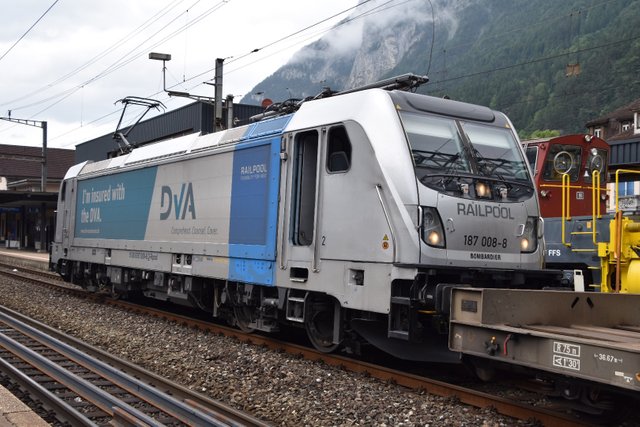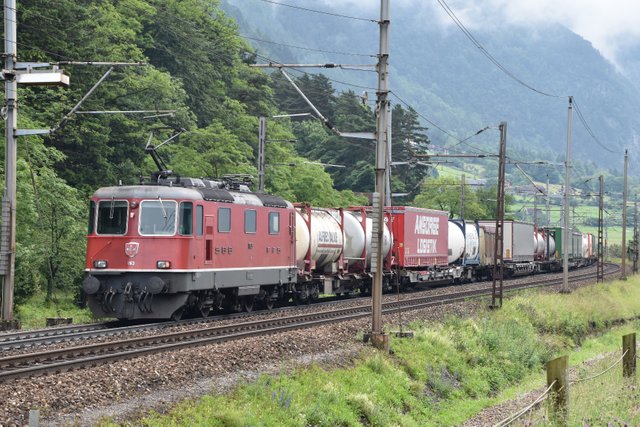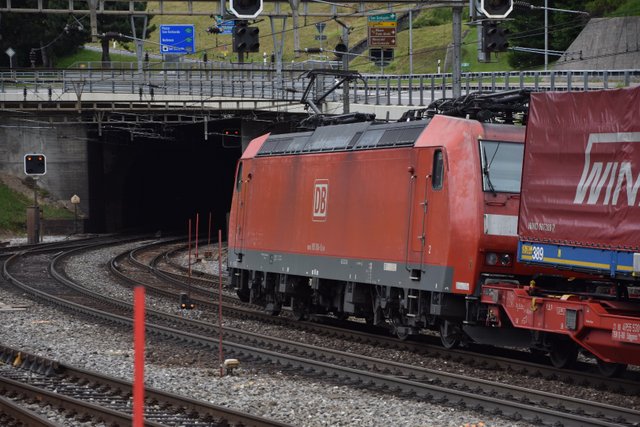Two locomotives are not always enough to carry a heavy freight train. Although on a flat surface they have the potential of doing so, they might not have sufficient tractive force to do the same on an inclined track. Where the train has to gain height (for instance in regions where there are many mountains) there are often multiple helicoidal tunnels, meaning the track takes a helicoidal direction permitting the load to gain height. Although, as mentioned in the previous article, a Re 6/6 and Re 4/4 could pull together theoretically a load of 1300 tons, they may not be able to do so where inclination increases. This is because reaching a greater altitude requires greater tractive effort. Therefore in stations before a great hill, they often have a deposit to attach to freight trains a third locomotive.

BR 187 008 (TRAXX) as push locomotive
It is often called “push locomotive” and is normally attached behind the freight train in order to allow it to go through all helicoidal tunnels and gain altitude. Normally (but not always ;) ) when the altitude is reached, the driver of the push locomotive takes it off and drives it back while the freight train proceeds with the journey.

Re 4/4 11163 as push locomotive

BR 185 094 (TRAXX) behind the "Winner Spedition" freight train
It therefore isn’t rare to see trains with more than two locomotives. In fact, three locomotive trains can almost be seen every day in mountainous regions.
Wow traxxmaster, I didn't know that but it would be cool to see!
Downvoting a post can decrease pending rewards and make it less visible. Common reasons:
Submit
Thanks for the info!
I found it very interesting.
Downvoting a post can decrease pending rewards and make it less visible. Common reasons:
Submit
Upvoted
Downvoting a post can decrease pending rewards and make it less visible. Common reasons:
Submit